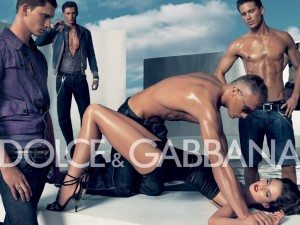As I plan to reflect in our team paper, this class has greatly influenced the way I immerse myself in new media. I have not withdrawn myself from digital media nor altered any of my interactions with new media, but I am more aware of how the world is represented to me via media and, reversely, how I am represented to the world via media (social media in particular.)
The relationship between this class and new media reminds me of the quote: “Fish don’t know they’re in water until they’re taken out of water.” I didn’t realize how heavily skewed representations of gender and sexuality are in new media until I was granted access to the readings and discussions relevant to this course. Previous to this course, when I flicked through magazine advertisements I glanced at them without much thought (except perhaps, Wow I wish I looked like her or Wow I wish I could afford that purse.) Now, however, my perception of these advertisements (and other forms of advertising as well, this is not limited to just magazine/paper ads) has completely morphed. This course has equipped me with the tools necessary to analyze just how disturbing contemporary advertising in new media can be. For example, take the Dolce & Gabbana advertisement below:

This SCREAMS of issues relating to gender and sexuality in new media that we’ve discussed throughout this semester. First of all, hello hypersexuality of both the male and female form. Do regular human beings walk around this scantily clad, fit, and dripping in oil? I wasn’t aware (sarcasm.) Second of all, to me this looks like a rape scene. One woman is being pinned to the ground by a man while a bunch of male onlookers stare admirably, perhaps waiting their own turns. Before taking this class, I would have just flicked by this ad without a care in the world. Now I analyze it for what it truly is: an artifact primarily relating to objectification of the female gender taking place in new media.
As I said before, this class has not only informed me of aspects of new media that I am more unfamiliar with (such as topics of gender and sexuality in video games, example: Assassin’s Creed Freedom Cry) but it has also gone beyond the series of the digital culture I once thought I knew but clearly do not. I now question my digital life, as demonstrated in my battle with the Dolce & Gabbana advertisement above. I’m not sure if that is a good or bad thing…
The assignments in this class were never tedious nor boring nor uninformative. Literally every reading/in-class discussion we’ve done has informed how I think about digital culture. As I grew up with digital technology, (it advanced as I advanced and vice versa), I take it all for granted. Although I likely still take new media for granted as it is so deeply ingrained in my life (twitter addict!!), I am very confident that I am better equipped to analyze gender and sexuality misrepresentations and problems in new media because of this semester.

